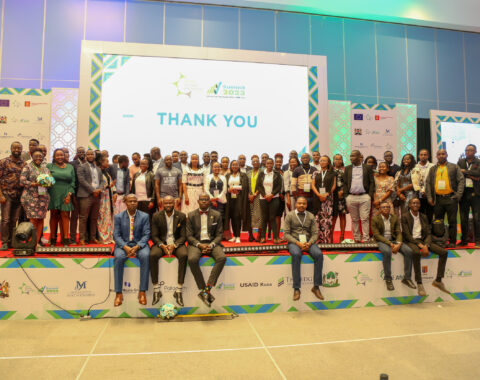The fashion industry has been rapidly growing. In the last 15 years alone, clothing production has doubled, accounting for 60% of all the textile production. The Green America’s Toxic textile report states that the textile industry alone produces 1.2 billion tons of carbon dioxide per year and accounts for around 20 percent of global industrial water pollution.
One particular trend driving this increase is the emergence of fast fashion. The newest trends in celebrity culture and bespoke fashion shows is that the clothing are rapidly available from affordable retailers. The demand for fast and cheap fashion has been on a rise leading to a negative impact on the environmental footprint.
Like most commodities, mass production and consumption are often accompanied by mass wastage and fashion is no different. Even though some brands, companies and designers are leading the way by innovating to reduce waste, improving recycling and encouraging upcycling, more still needs to be done.
Unfortunately, fast fashion and sustainability do not seem to go hand in hand in almost every aspect. From growing cotton which requires a large volume of water and pesticides, to the textile production stage which majorly contributes to global water pollution. Additionally, the industry generates a large amount of waste. A report released by Ellen MacArthur Foundation, states that more than half of the fast-fashion products that are disposed of yearly ends up being buried or burnt. At this rate, a waste-free fashion business almost seems impossible to achieve.
But not all hope is lost, fashion designers, companies, brands are increasingly focusing on circular fashion models, resale, rental and repair, to mitigate these impacts. Consumers are also demanding better quality products that are not harmful to the environment.
In Kenya, fashion designers such as Michelle Pino, founder of One Hundred Years – a fashion house in Kenya, is at the forefront of promoting sustainable fashion through her brand.
“Through my brand, I am looking to address sustainability issues around the fashion industry, from environmental protection to preservation of the African heritage,” She says.
In west Africa, Senegalese fashion designer and artist, Selly Raby, is also keen on promoting sustainable fashion. She believes that designers need to understand that there is a need for another approach towards fashion; what it means to dress up, what trends mean and how people interact with the environment.
She points out that fashion needs more radical ideas and to promote this, designers need to join the #NoWasteChallenge and share ideas and solutions towards sustainable fashion and a safe environment.
The #NoWasteChallenge, spearheaded by Kenya Climate Innovation Center (KCIC) and What Design Can Do, is a global design competition that is creating awareness on the contribution of waste and consumerism to the climate crisis.
The competition is looking for designers and creatives from around the world to submit their innovative solutions to reduce waste and rethink the current production and consumption cycle.
Currently, the competition’s call for application is ongoing and will run till April 21st, 2021. Designers and creatives who believe they have the perfect innovations suited for this challenge can apply for the competition through this link: https://www.kenyacic.org/.












